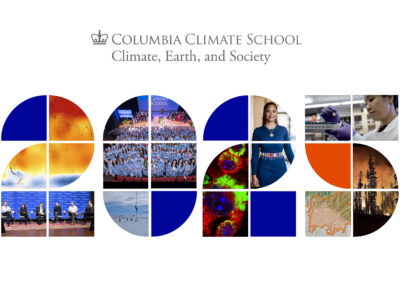
Dust from the high Andes of southern Bolivia and northern Argentina was an important source of iron for the nutrient-deficient South Pacific in the last two glacial cycles, especially at the beginnings of these cycles. This is the key finding of a new study in the journal Proceedings of the National Academy of Sciences.
Using a sediment core from the southern seafloor collected in 2009, the researchers were able to reconstruct the contributions from various dust sources located on the surrounding continents. According to the authors, the jet stream, a set of powerful air currents flowing from west to east several kilometers up, picked up fine mineral particles on the east side of the Andes and transported them almost all the way around Antarctica to the southeast Pacific.
Atmospheric dust is thought to be a key component of the climate system. Dust particles influence the Earth’s energy budget, because they reflect incoming sunlight at high altitudes, which has a cooling effect. Mineral particles can also carry nutrients such as iron and manganese to remote ocean areas, where they stimulate the growth of algae. When the algae die and sink to the deep ocean, they remove carbon dioxide from the atmosphere, which also has a cooling effect. These mechanisms can be particularly effective in the remote and iron-deficient southern reaches of the Pacific, Indian and Atlantic oceans, so changes in the Southern Hemisphere dust cycle may have played significant roles in past natural swings between cold glacial and warm interglacial periods. For this reason, the sources and transport pathways of dust have been the subject of intensive research in recent years.
In the study, a team led by Torben Struve of Germany’s University of Oldenburg analyzed a sediment core from the seafloor of the subpolar South Pacific. The core contained deposits dating to 260,000 years ago, covering two glacial cycles. Using the geochemical fingerprint of the dust in the core, the researchers were able to determine the proportion of particles from South America, South Africa, Australia and New Zealand in the different phases of the two glacial cycles.

“We were surprised to find that dust from South America dominated throughout the study period, even though it had to travel a very long distance,” said Struve. According to the analysis, up to two thirds of the particles originated there, a proportion that was particularly high at the beginnings of the glacial cycles, when temperatures started dropping. Land masses closer to the sampling site including Australia and New Zealand contributed lesser amounts, mainly at the ends of glacial periods, when temperatures started to increase again.
The researchers say the South American dust was injected from high-elevation regions in the eastern Andes into the jet stream and traveled around Antarctica in the upper atmosphere. In contrast, dust particles from the lower-elevation regions in Australia and New Zealand were more quickly washed out of the atmosphere by rain, so they rarely reached the heights needed for long-distance transport.
The study showed that most of the South American dust came from regions at altitudes of up to 5,000 meters. These included parts of the Puna-Altiplano Plateau and the dry high valleys of the Central Andes. Until now, this region had received little attention from researchers.
Coauthor Gisela Winckler, a geochemist at the Columbia Climate School’s Lamont-Doherty Earth Observatory, noted that the study has modern implications. Some scientists have proposed artificially seeding the oceans with iron in order to encourage the growth of algae that could soak up atmospheric carbon. “This topic is seeing a renaissance as nature-based ‘solutions’ to the climate crisis, including marine iron fertilization, are more and more on the radar,” she said.
The study concludes that dust production from all sources increased three to six times during the glacial periods compared to the warmer interglacials. The finding confirms earlier studies indicating it was drier and presumably also windier in cooler climates than in warm ones. The team also found evidence that the westerly winds that prevail around Antarctica shifted southwards or slowed at the end of the ice ages and the following interglacial periods.
The findings could contribute to a better understanding of natural climate swings in the Southern Hemisphere, noted Struve. “How exactly natural iron fertilization in the Southern Ocean amplified these climatic changes is not yet fully understood,” he said. He added that the study does not answer the question of whether it makes sense to artificially fertilize nutrient-deficient ocean areas with iron to slow human-induced climate change, he said.



